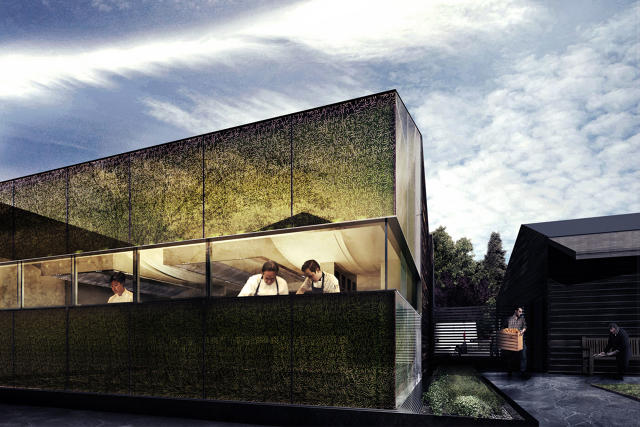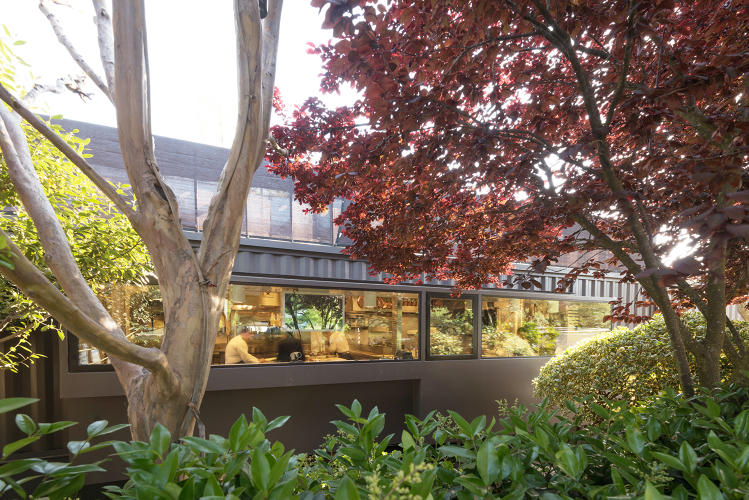Peek within French Laundry’s New Kitchen
The culinary mecca will get a makeover.
April 7, 2015
in the early 1900s, the building used to be a saloon. After prohibition, it was a laundromat. these days, Thomas Keller’s French Laundry is among the easiest eating places on the planet, serving $295 mounted worth ingredients in Napa Valley.
Now, the international structure agency Snøhetta, along with Envelope A+D and Harrison & Koellner, LLC, are leading the restaurant’s first major renovation in 20 years. The core building will remain untouched, however the restaurant will get a new kitchen and revamped backyard house—updates, as Keller places it in the press release, with the intention to prepared the trade for its subsequent 20 years.
inspired through The Louvre
The garden’s new outer fence is sort of a deconstructed dwelling, full with open-air home windows to peek via. Stroll in the course of the garden, and that you could pass by way of the kitchen. What might no longer be clear in the rendering here is that it’s actually a tumbler building, impressed by means of Keller’s affinity for the Louvre’s glass pyramid. On the outside, it’s completed with a hedge-like screenprinted coat of green. look carefully, and also you’ll see countless small strokes. those aren’t leaves, however the paths of each chef’s own fingers while cooking, sketched and affixed to the building itself. And on the within, cooks have 25% more space than before and Dekton quartz antimicrobial counters to keep issues clean.

Choreographing a better Kitchen
while Snøhetta in fact had no earlier experience designing Michelin-rated kitchens, Thomas Keller tapped the agency for the job on account of its city design work in instances square, where pedestrians, bikers, and drivers intersect in one tremendously beautiful space. “He questioned if lets deliver that [crowd control] into kitchen,” explains Snøhetta partner Craig Dykers. “Kitchens are crowded and can also be extreme, but they need to stay crowded, for the reason that intimacy is essential to the work. It’s counterintuitive, however the extra space you create, the less positive and artistic a kitchen is.”
So the agency’s designers embedded themselves in French Laundry’s kitchen, learning cooking workflows and diagramming what Dykers calls “the choreography of the kitchen.” From this observational find out about, they generated just a few small however necessary interventions.
First, the ceiling. It’s no longer flat, however a carefully curved, injection-molded concrete, crafted to tackle the issue of kitchen acoustics. given that cooks speak to waiters coming inside and out of the kitchen, conversation moves ahead, one-means in the course of the room, which means the cooks in the back can’t always hear the cooks within the front. (It’s that very same problem you will have in a automobile, the place the individuals within the again can’t hear the dialog in the entrance.) but this new ceiling channels sound front-to-again, keeping everyone on the same page.

The second innovation tackles an issue of being, neatly, too shut. “The tables are in point of fact close to one some other,” Dykers explains. “When chefs are engaged on one desk, and so they need to work at the back of them, they pivot. the issue is, the nearer the tables get to at least one some other, [the more] they rub in opposition to your butt.” In response, the kitchen will have a 2-inch cusp carved into each and every desk, allowing cooks literal wiggle room.
a third idea comes from Keller himself. In most restaurants, there’s just a door between the cooks and the diners. At French Laundry, waiters shall be given their very own corridor, a buffer between the lively kitchen and the quiet dining room. It’s a spot where the wait body of workers can decompress, even whereas carrying sizzling plates to tables.
Low-Tech by using Design
If all these ideas appear decidedly low-tech for one of the crucial perfect kitchens on the earth, know that it is in reality by way of design.
“Kitchens remain somewhat primitive, and they’ve to, since the amount of effort in growing meals like at French Laundry, require a relentless movement of things,” Dykers says, “if you do too many technical issues, or rely on electric motors to open doorways, the technical issues destroy down sooner or later.”
Dykers gave the example of looking at cooks climb up and down on footstools to pull pots off of high shelves. putting in pneumatic shelving seemed like a easy answer, unless the firm realized, “which you can’t repair [a broken shelf] when you’re making a meal.”
French Laundry’s new kitchen and backyard will open later this yr. unless then, the kitchen team of workers will be working out of transport containers, in what is without a doubt not a nod to Starbucks and Taco Bell.
[Renderings: Snøhetta. Photos: Deborah Jones/The French Laundry]
(152)


















